The Importance of Teacher/Researcher Collaboration
It can be a humbling experience to admit that something isn’t easy, or that you don’t understand a topic or concept. It is harder still when you are surrounded by knowledgeable individuals and expected to explain their research in an accurate manner. While humbling, it is educational. Through learning about concepts such as trace metal chemistry and molecular biology I was thrown back into the seat of the student - finding a concept difficult, wanting it explained in a different way, and frustrated when it just didn’t make sense. It’s instructive for teachers to be reminded that students feel this way daily. The PolarTREC experience made me the student and forced me to think about learning and understanding in new ways. Luckily, I was on a ship with intelligent, patient scientists willing to work with me until I could make sense of the topics. It is a valuable lesson to remember when working with students.
The PolarTREC program encourages relationships between educators and research scientists and serves as a valuable opportunity to incorporate field research techniques and current data into STEM curriculum. Exposure to different types of field work introduces students to unique ecosystems that promotes interest and increases classroom engagement. 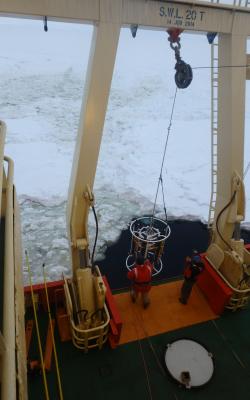
The PolarTREC experience is also an opportunity for the research team to learn from experienced teachers. Researchers, including undergraduate students, graduate students and university professors, benefit from learning more about current classroom practices and national/state standards. In addition, researchers can enhance their broader impact by working alongside educators to make their science is more accessible to the public.
As a classroom teacher, it is easy to fall into the habit of presenting and discussing the same content and same examples year after year as there is little time to seek out new examples that are relevant to the content. My PolarTREC experience reminded me of the importance of learning about and sharing current research with my colleagues, students, family, and friends, It was an opportunity to eat, sleep and breathe science in a way that is not generally provided to science teachers. I stepped off the ship with a better understanding of major science concepts and the confidence to share this information with my community. That confidence came from my extended time with the research team, learning from them and, most importantly, being directly involved in all aspects of their work.
Southern Ocean Diatoms Research Expedition
The Southern Ocean is one of three known locations on Earth with low usable iron levels. This low level of iron can greatly affect the entire ecosystem. Iron, in its usable form, is an essential nutrient for plants and algae (including diatoms). Without available iron, many steps in the process of photosynthesis are not possible. If iron is limited, productivity in these marine environments can be low. Limited productivity of algae and other primary producers can influence the entire food web in these locations. Diatoms, the most abundant producers in the Southern Ocean, play a crucial role in the food web. 
The Southern Ocean Diatoms research team is a collaborative group of scientists from The University of Rhode Island (URI), Old Dominion University (ODU), The University of South Florida (USF) and the Woods Hole Oceanographic Institution (WHOI). The wide-ranging experience and diverse backgrounds of the team members created a research expedition that incorporated numerous experimental methods and sampling techniques. The major goal of the research project was to learn more about the biotic and abiotic factors that influence the growth of diatoms in low iron regions of the Southern Ocean and waters surrounding the Western Antarctic Peninsula. Water and ice samples were collected at various stations throughout the region. Many of these stations are part of the Palmer Long Term Ecological Research (LTER) study area created in 1990. The samples were used to conduct incubation experiments, analyze nutrient levels, isolate and culture individual species of diatoms, culture bacteria samples from the region and filter diatom samples for future microbiology, genetic and trace metal chemistry tests.
Samples were collected during a six-week research cruise aboard the RVIB Nathaniel B. Palmer. 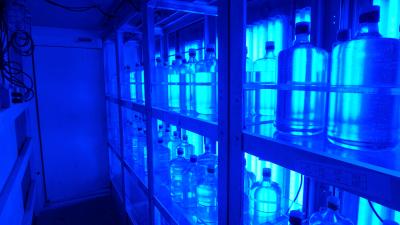
In addition to real-time sampling data, water and diatom samples were filtered and prepared for shipment to the various laboratories for additional analysis after the cruise. This analysis includes iron speciation, ligand identification and DNA and RNA analysis on various aspects of the diatom genome and metagenome. Prior to my time in the field, I recognized trace metal chemistry and advanced molecular biology as subjects to explore during the trip. I was not familiar with many of the methods and concepts associated with trace metal chemistry and current techniques in molecular biology. 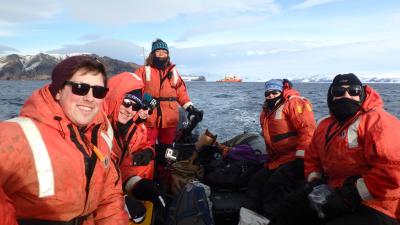
Student and Public Impact
Throughout the cruise, I was included as a vital member of the research team. I was directly involved in sampling, processing and post-analysis activities. I felt valued for my abilities as an educator to share the work with the public. The daily PolarTREC journals sometimes consisted of stories about life about the RVIB Palmer or about wildlife in the area, but many focused on the science concepts and methodologies. These journals were a collaborative effort with members of the research team. Their scientific knowledge and enthusiasm for public outreach helped to create journals that made the technical aspects of the research accessible to my high school students, their families and other members of the public that followed the expedition each day. Not a day went by that I didn’t have a detailed conversation with a member of the science team about current research, policy, theory or methodology. 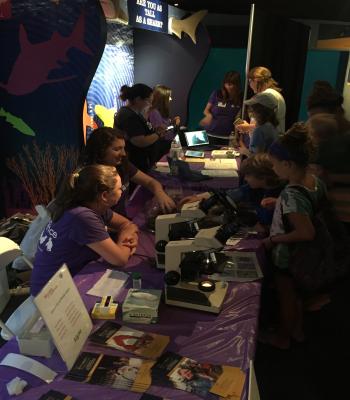
The PolarTREC journal platform allows for student/public interactions via comments. Prior to leaving for the field experience, students from my Biology, Marine Science and Zoology classes were encouraged to communicate with the research team on a daily or weekly basis, depending on their interests. On average, each student commented or asked a question at least five times during the expedition. Three students wrote to me daily using the comment tool. Because the cruise departed before school began I had not met many of these students prior to leaving. Through the journals, however, I developed a connection with each one as they followed my journey and shared my experiences. When I returned to my classroom in late October, I could put faces to names and share stories or experiences that each would understand based on their questions and comments. Parents, administration and fellow staff also commented on the benefits of the journals as a tool to better understand the experience and share in a once-in-a-lifetime opportunity.
Students and parents both commented on the varied nature of the journals, which included special write-ups about crew members and support staff. The PolarTREC opportunity is not only a way to educate others about the scientific concepts, but to help individuals understand the collaborative nature of science. This opportunity allowed me to provide students with names and faces of the non-scientists who have just as much impact on the success of the research expedition as do the researchers themselves.
Advanced connectivity aboard the RVIB Palmer also made it possible for me to connect with my students via Twitter and Facebook. These platforms allowed for short, real-time updates that appeal to the popularity of social media in this age group. In addition to daily updates, a PolarConnect presentation connected students from various high schools and universities, friends, family and other members of the public with the research team. Dr. Bethany Jenkins from URI (the principal investigator) joined me for the 45-minute presentation. Attendees learned about the expedition research and could see what it was like aboard the RVIB Palmer, as the PolarConnect event was broadcast with the bonus of a live video feed.
Post-Expedition Plans
I learned an incredible amount of information during this expedition. My understanding of chemical oceanography and molecular biology has increased exponentially. I also have a better understanding of oceanographic sampling techniques from my work with the research team as well as the Antarctic Support Contract (ASC) science support team and Edison Chouest Offshore (ECO) crew members that worked to ensure the success of expedition.
Upon my return to North Quincy High School I was eager to share my experiences with my students and confident to teach topics I had struggled with prior to this trip. My field experience with the Southern Ocean Diatom research team has equipped me with the knowledge to prepare inquiry lesson plans, develop hands-on demonstrations and use real-world examples to cover important content like climate science, nutrient cycling and other ecology-based topics. 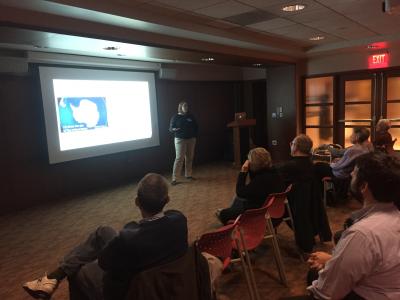
This knowledge has given me the confidence to speak about my experiences and share not only my incredible pictures of scenery and wildlife, but a detailed account of the scientific research. I understand the difficult concepts and can share the information in a way that is accessible to the different audiences. Information sessions at the Mystic Aquarium, a lecture series presentation at the Thomas Crane Public Library in Quincy, MA, upcoming visits to local schools and other upcoming outreach events allow me to present the work of the research team to promote their important work and to enhance local knowledge of global science. Each time I am asked about my experience, I am committed to sharing my story and to helping increase interest in STEM topics, polar sciences and the evolving world of science education.
| Attachment | Size |
|---|---|
| Download Report (1.04 MB)1.04 MB | 1.04 MB |
This program is supported by the National Science Foundation. Any opinions, findings, and conclusions or recommendations expressed by this program are those of the PIs and coordinating team, and do not necessarily reflect the views of the National Science Foundation.
